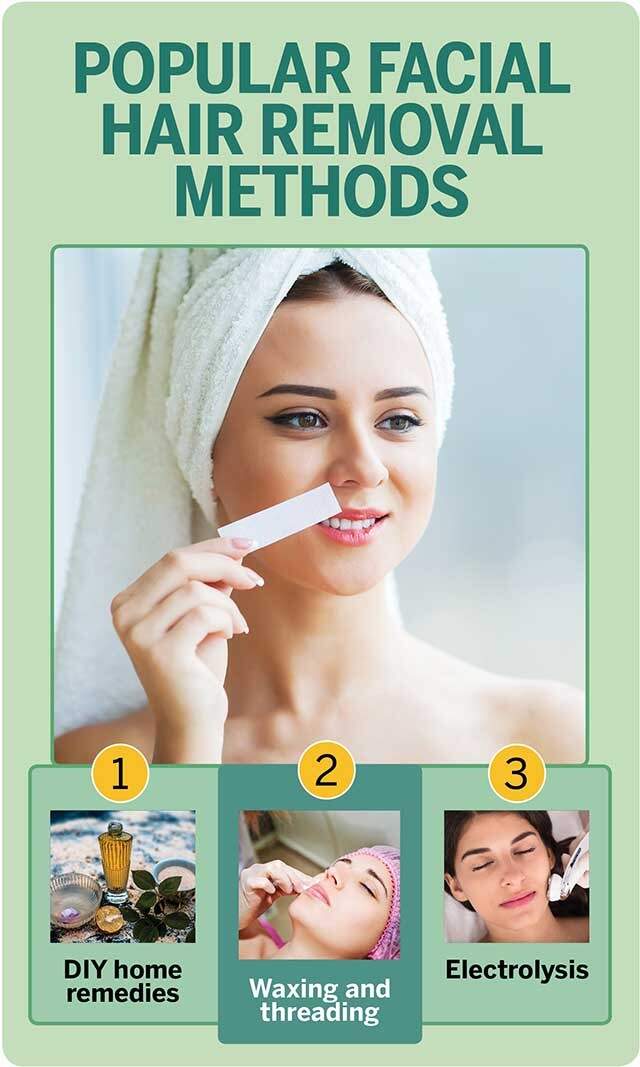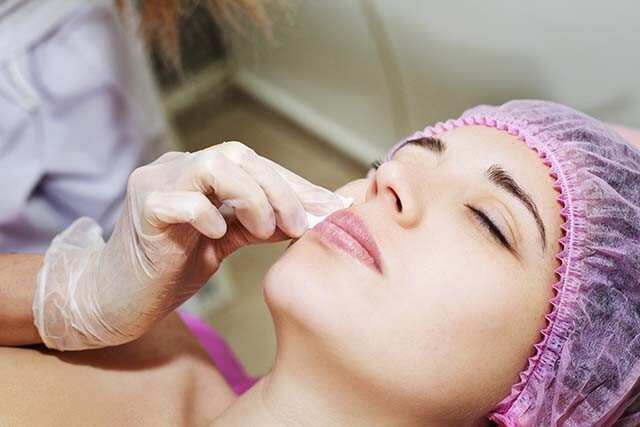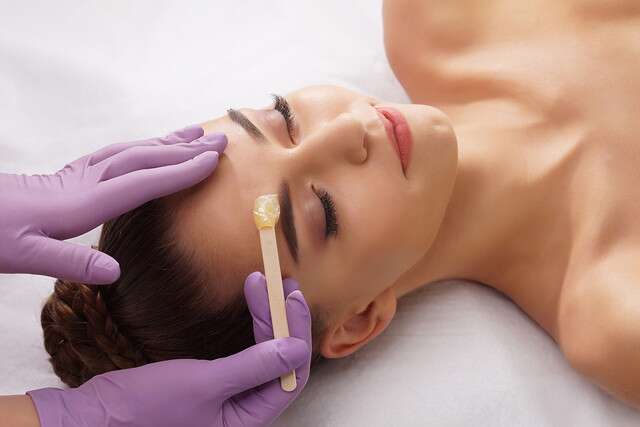
You may maintain a strict beauty regimen, but there’s one thing that just refuses to be controlled. We are talking about unwanted facial hair. Sometimes we suffer from excessive growth and we find ourselves at a loss as to how to get rid of the facial hair permanently (usually coarse and dark).
Facial hair can take an emotional toll; studies show that women who suffer from excessive facial hair often report clinical levels of anxiety. A 2006 study, carried out in the UK, shows that on average, women with facial hair spend more than one and a half hours a week trying to manage the problem. So, what are the simple and effective ways how to get rid of facial hair permanently? Here's a lowdown.
Causes Of Facial Hair
Generally speaking, hirsutism is attributed to a surplus of male hormones called androgens. Hormonal imbalance is often blamed for this kind of hair growth.
The other causes include congenital adrenal hyperplasia (a hereditary medical condition that affects adrenal glands), obesity or rapid weight gain and intake of anabolic steroids that are normally consumed by people who want to build muscles.
But PCOS (polycystic ovary syndrome) is said to be the most common cause of excessive hair growth on your face or on other parts of your body.
Tip: Before you opt for any extended treatment against facial hair, know what is causing you the problem. That can help you in chalking out a strategy for getting rid of facial hair permanently.
1. Excessive Facial Hair
First things first; you need to know what hirsutism entails. Hirsutism is nothing but excessive hair growth on your face or on other parts of your body. Generally, it affects women; studies show that one in 14 women has hirsutism. You can have excessive hirsutism if the growth of hair is thick and black, and not fine and thin.
Sometimes, the concomitant symptoms of hirsutism may include erratic menstruation, oily skin and pimples. The first step to dealing with hirsutism is consulting a doctor who may ask you to undergo several medical tests to check what's causing hirsutism in the first place. Knowing the degree of hirsutism will help you plan how to get rid of facial hair permanently.
Tip: Consult a doctor to know the degree of hirsutism you are suffering from.
2. Medical Conditions
If you have a medical condition that is leading to excessive hair growth, you should make all the effort to contain the disease first. Studies show that PCOS accounts for about 72 to 82 percent of excessive hair growth cases. So, if you have been diagnosed with PCOS, you should deal with the problem on a war footing. There are several ways the medical condition can be addressed.
If you are overweight and have been diagnosed with PCOS, losing weight by adopting a healthy lifestyle can help regularise your menstrual cycle. Experts say that losing weight reduces your insulin levels, resulting in lower testosterone levels, which in turn not only improves fertility but also reduces visible symptoms such as excessive hair growth and acne.
Oral contraceptive pills are widely prescribed for PCOS. Apart from this, hormone medications to reduce testosterone and stimulate ovulation and drugs, such as metformin, to treat diabetes are also prescribed. Surgery to remove large cysts and destroy the tissue that produces androgens is usually considered the last option.
Tip: Exercise, eat healthily and fight obesity to control PCOS problems.
20 Ways To Remove Facial Hair Permanently
It can unless you have excessive hirsutism. Instead of harsh chemical measures against facial hair, these simple but effective home remedies can certainly help you get rid of facial hair permanently:
1. Chickpea Flour Mask
In a bowl, mix half a cup of chickpea flour, 2 tsp of turmeric powder, half a tsp of fresh cream and half a cup of milk to form a paste. Apply to the area where hair growth is quite visible and wait for 20-30 minutes. Rub gently in the opposite direction of hair growth and rinse with lukewarm water. For best results, use this pack at least twice a week.
2. Papaya and Turmeric Mask
In a bowl, mix 2 tbsp of papaya paste, ½ tsp of turmeric powder and 5 tbsp of aloe vera gel to form a paste. Apply the paste to the area showing unwanted hair growth. Leave it on for 20 minutes until dry. Remove this by rubbing in the opposite direction of the hair growth.
3. Gram Flour and Rose Water
Take 3 tbsp of green gram flour, one tbsp of rose water and one tsp of lemon juice and mix them well in a bowl. Apply to the areas where the hair growth is most visible. Wait for 30 minutes or so or until it's completely dry. Rub the mask off in circular motions.
4. Honey Lemon Mask
Mix the juice of an entire lemon with half a tbsp of honey to form a smooth paste. Apply the mixture to the affected area and leave it on for 20-25 minutes. This will help lighten the unwanted hair as lemon has bleaching properties.
5. Banana and Oatmeal Scrub
Mix one mashed banana with three teaspoons of oatmeal in a bowl. Massage it onto your face for 15-20 minutes in circular motions and wash it off with water. For best results, use the mask twice a week.
6. Rice Flour, Turmeric and Milk
Take 3 tbsp of rice flour, one tbsp of turmeric powder and 2 tbsp of milk. Mix all the ingredients together. Add water, if necessary. Apply this mask to affected areas and wait for 30 minutes. Once it's completely dry, wash it off with lukewarm water.
7. Rose Water, Olive Oil and Alum
Take a little bit of alum, one tbsp of rose water and one tbsp of olive oil. Mix all – make sure that alum (turn it into a powder) dissolves in the rose water. Apply to affected areas with a cotton ball. Wait till it dries off completely. Apply another layer and wait until dry. Repeat this 6 times. Wash off and hydrate the skin with a moisturiser or a few drops of olive oil.
8. Egg and Corn Flour Mask
Mix 2 tsp of sugar with one tsp of cornflour and one egg to form a thick paste. Apply it to the face and let it dry for 15-20 minutes. Peel it off gently once it’s dried, and repeat thrice a week for maximum results.
9. Barley and Milk Scrub
Mix 2 tbsp of barley powder with one tbsp of milk and lime juice each to make a paste. Apply on your face, and let it dry naturally for 20 minutes. Wash off with lukewarm water.
10. Gelatin and Milk
Take 2 tbsp of unflavoured gelatin powder, 4 tbsp of milk and a few drops of lemon juice. Mix all and heat the mixture for about 30 seconds. Let the mixture cool off and apply it to the face. Wait for 10 minutes and peel it off. Don't try this mask if you have sensitive skin.
11. Lavender Oil and Tea Tree Oil
Believe it or not, a mix of essential oils can act as an anti-facial hair mask. Take 2 tsp of lavender oil and 8 drops of tea tree oil and mix well in a small bowl. Apply twice a day with a cotton ball. These essential oils act against androgens and can inhibit hair growth.
12. Lentils, Potato and Honey
You need half a cup of yellow lentils, a potato, a few drops of lemon juice and one tsp of honey. Soak the lentils overnight and turn them into a thick paste in the morning. After peeling the potato, use a processor to extract the juice from it. Mix the lentil paste and the potato juice together. Add the lemon juice and honey. Apply to affected areas and wait for about half an hour. Once the mask is fully dry, rub it off with your fingers.
Tip: Try to use any of these masks for facial hair removal at least once a week.
13. Electrolysis

Electrolysis is quite a popular method of getting rid of facial hair permanently. Basically, during electrolysis, an epilator device is inserted into the skin and shortwave radio frequencies are deployed to damage hair follicles and prevent new hair from growing.
You can't get long-term hair removal benefits from electrolysis in just one sitting; you would need several follow-ups to get rid of facial hair permanently. But if you have patience, and the money to boot, electrolysis can give you the desired results, according to experts. What's more, it's a low-maintenance procedure.
But do not go for electrolysis without consulting a proper expert. You need a certified dermatologist for this process. If unsterilised needles are used, this procedure could lead to severe infections.
Tip: A certified dermatologist is needed for electrolysis.
14. Laser Hair Removal
Laser hair removal is another popular method of getting rid of facial hair permanently. However, it is important to understand the full implications of laser hair removal before opting for it. Basically, laser hair removal involves the deployment of mild radiation with the help of high-heat lasers.
The basic principle is, that hair follicles need to be damaged in order to inhibit hair growth permanently. Again, this needs a host of follow-ups to get long-term benefits. Also, it can be a costly procedure. Thirdly, you need a thorough after-care regimen.
For instance, there can be no gyms, makeup, spas or saunas for you after the laser treatment. You will also need to use specific products recommended by your dermatologist; you need to avoid scrubs, glycolic acid and retinol creams. Another note of caution: Laser is not 100 per cent permanent, hair may reappear after some time.
15. Facial Waxing

You could also be asked to consider facial waxing as the latter can uproot hair from its roots. If you’re skilled, you can do this at home, but it is usually done as a salon procedure. It is also affordable, as opposed to permanent hair removal techniques, and is easy since groups of hair are removed in one go.
Also, over a period of time, waxing can achieve permanent hair removal if the follicle weakens enough. Soft wax (approved for cosmetic use) is applied over the desired area with an object like a spatula or butter knife. Cloth or paper strips are applied over this and pressed firmly into the skin. Then the strip is quickly ripped off in the direction of hair growth.
These days, hard wax is also available, where the wax can be ripped off without the use of a cloth. There can be some downsides though. To begin with, waxing can often lead to bloody patches on the skin. There can be skin irritation, discoloration and other allergic reactions as well. Since you have to repeat the process, pain can be a permanent feature.
Tip: Strictly avoid facial waxing, if you have sensitive skin.
16. Shaving

Shaving your face not only removes hair but also dead skin cells, thus exfoliating your skin. However, shaving can give you a five o’clock shadow, meaning you'll have to do it more often to keep hair growth in check. It can also lead to ingrown hairs, and leave behind nicks and cuts if not done carefully. Remember to moisturise your skin after shaving to prevent dryness and itching.
Tip: Avoid shaving if you have excessively dry skin or skin conditions like psoriasis or eczema.
17. Tweezing

Tweezing is like waxing in that it removes hair from the root. You use a pair of tweezers to pluck or pull hair from the roots, one by one. Tweezing can be done to shape the eyebrows or to remove any dark hair that stands out, but it can be time-consuming to remove all facial hair with tweezers.
Tip: Hold your skin taut with one hand and use the tweezer with the other hand to grab the hair. Pull in the direction of hair growth.
18. Threading

Threading is done using a thread, which is pulled and twisted to remove unwanted hair from the follicle. It works better than tweezing because you can cover a larger area and remove more hair in less time.
Tip: Threading is typically done to shape eyebrows and remove hair on the upper lips and chin.
19. Sugaring

Sugaring is a hair removal method that uses sugar paste to get the job done. It can be used to shape eyebrows and remove peach fuzz without hurting the skin.
Tip: Sugaring can be done on sensitive skin, but avoid it if you have a skin condition like eczema.
20. Using An Epilator

An epilator is a device that pulls hair out from the roots, much like a tweezer, but faster and in an efficient manner. There are several types of epilators available, so choose one that is made to remove facial hair and that suits your needs.
Tip: Exfoliate a day or two before epilation to avoid ingrown hair.
Frequently Asked Questions (FAQs)
Q. What is a Ferriman-Gallwey index? How is it related to getting rid of facial hair?
A. To put it simply, it's an index whereby the degree of hirsutism or male pattern body hair growth is calculated for women. Devised in 1961, the original index looked at 11 body areas in women, rating the hair from zero (no hairs) to four (extensive hairs). This scale was later simplified. Basically, the index now comprises images of hair distribution on areas such as the face, chest, stomach, arms and legs. A score of eight to 15 indicates normal to mild hirsutism while a score beyond 15 indicates excessive hair growth.
Q. How can I stop hair from growing on my face?
A. Using hair removal methods like waxing and sugaring regularly can slow down hair growth. If you're looking for more long-term treatment options, go for electrolysis or laser hair removal. If you have excess hair on the face due to underlying issues like hormone imbalance, taking medication can help.Q. Does plucking chin hair make it grow more?
A. Tweezing, waxing and threading are the best ways to remove chin hair because pulling hair from the root traumatises the follicle. This can slow down regrowth.Also Read - Here Are Some Tried And Tested Methods For Upper Lip Hair Removal